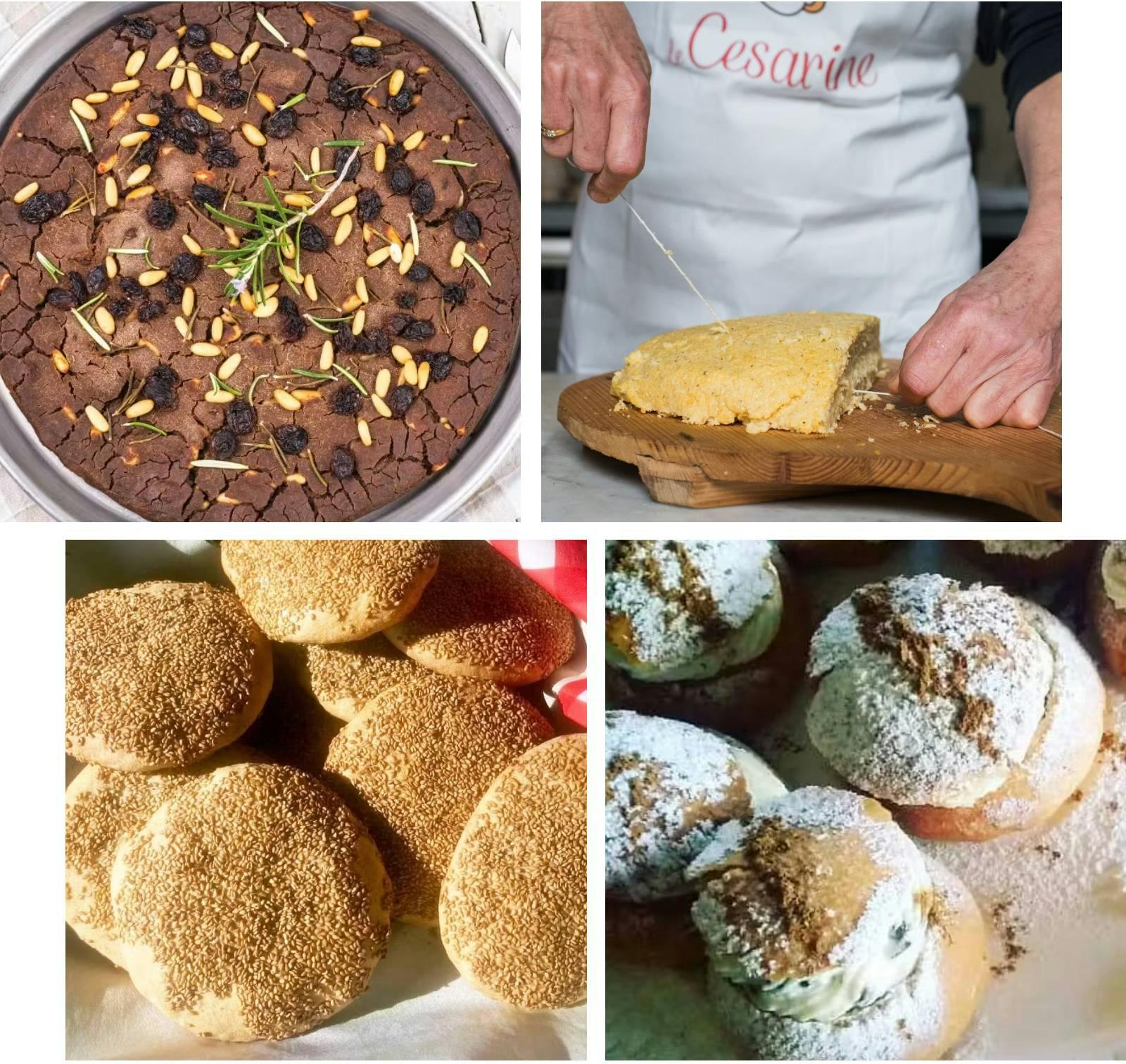

In just a few days, on November 11, Italy celebrates St. Martin’s Day (San Martino), a date traditionally associated with a sudden spell of mild, sunny weather, so much so that Italians call it the “Estate di San Martino”, literally “St. Martin’s Summer”.
Food plays a central role in these celebrations, and today, together with our Cesarina Katia from Lecce, we’re sharing the recipe for a beloved dish from Puglia, more precisely from Salento, the southernmost part of the region. Though it’s a star of the Christmas season, this treat is also prepared in November, especially in Lecce, to mark St. Martin’s Day: le pettole.

The Pettole Recipe
Pettole, or pittule in the Salento dialect, are delicious little balls of leavened dough, deep-fried until golden and crisp on the outside and soft and airy inside. Simple yet irresistible, they’re made with just three basic ingredients: water, flour, and salt.
They’re best enjoyed freshly fried, when they’re still warm and fragrant. Pettole are perfect as an appetizer, served alongside fried zucchini blossoms, or even as a dessert, dipped in honey, vincotto (a sweet, reduced grape must), or simply dusted with sugar.
Pettole are a traditional dish from Puglia, also found in parts of Basilicata, while in Tuscany a similar recipe is known as coccoli fiorentini.
So, what are you waiting for? Let’s head to the kitchen and bring these golden, bite-sized pieces of fried dough, full of warmth and tradition, to the table!

Pettole
Golden and fragrant: the exquisite fried dough bites from Puglia’s culinary tradition
Ingredients
- 1 kg flour
- 1 cube of fresh yeast
- Lukewarm water, as needed
- Salt
Method
- In a large bowl, place the sifted flour, the yeast, the water, and finally the salt.
- Mix with one hand until you obtain a soft, lump-free dough.
- Cover the bowl with the dough and place it in a warm spot for at least three hours.
- After the dough has risen, move on to cooking: heat the oil in a pot, then use a spoon to take a small portion of dough and fry it until golden.
- Place it on a plate lined with paper towels.
- Continue until all the dough is used.
Cesarina Katia’s tip: to make richer pettole, you can add salted cod, cauliflower, turnip greens, or cherry tomatoes to the dough.

Classic St. Martin’s Day Recipes
Some of the most popular St. Martin’s Day recipes, besides the pettole we’ve just introduced, include castagnaccio, the quintessential autumn dessert made with chestnut flour, pine nuts, raisins, walnuts, and rosemary; polenta uncia, a rich, comforting dish that makes the most of humble ingredients; muffolette, round sesame-covered rolls typical of southern Italy; and biscotti di San Martino, traditional Sicilian cookies scented with anise and cinnamon. And the list could go on: each region of Italy brings its own flavors and traditions to this heartfelt November celebration.


Why is this time of year known as “St. Martin’s Summer”?
We’re in the first half of November, and you may have heard Italians refer to this period as “l’estate di San Martino”, literally “St. Martin’s Summer”. It’s said to “last three days and a little more”. During these few days, temperatures rise unexpectedly, giving the impression of a brief return of summer in the middle of autumn. Whether this is a real phenomenon or just a poetic tradition, it’s fascinating to discover where this belief comes from.
Martin: from Roman soldier to bishop
To understand the origins of this “autumn summer”, we need to go back many centuries. Stationed in Gaul (modern-day France) was a young Roman soldier named Martin. One cold, rainy day, as he rode out of the city of Amiens, he saw a shivering beggar by the roadside. Moved by compassion, Martin drew his sword, cut his military cloak in half, and gave one part to the poor man. Suddenly, the clouds parted, and the sun began to shine warmly, as if it were midsummer.
That night, Martin dreamed of a man wearing the half of the cloak he had given away: it was Jesus Christ. In the dream, Christ said to the angels: “Here is Martin, the Roman soldier who is not yet baptized; he has clothed me”. Struck by this vision, Martin decided to leave his military life and dedicate himself to God. In 371, he was made Bishop of Tours by popular demand.
Today, St. Martin is one of the most beloved saints in the Christian world. In France alone, there are more than 4,000 churches dedicated to him, and many towns and villages bear his name.

The Feast of St. Martin
St. Martin’s Day, also known as the Festival of Lanterns, is one of the highlights of the Italian autumn. Its origins date back to ancient times and are linked to pagan rituals honoring the dead and celebrating the harvest. Traditionally, the celebrations take place in the autumn days when the new wine is opened and blessed, agricultural work pauses, and people give thanks to the earth for its bounty, from chestnuts and wine to grains. It’s no surprise, then, that St. Martin’s Day has inspired a wide variety of recipes, both sweet and savory.
